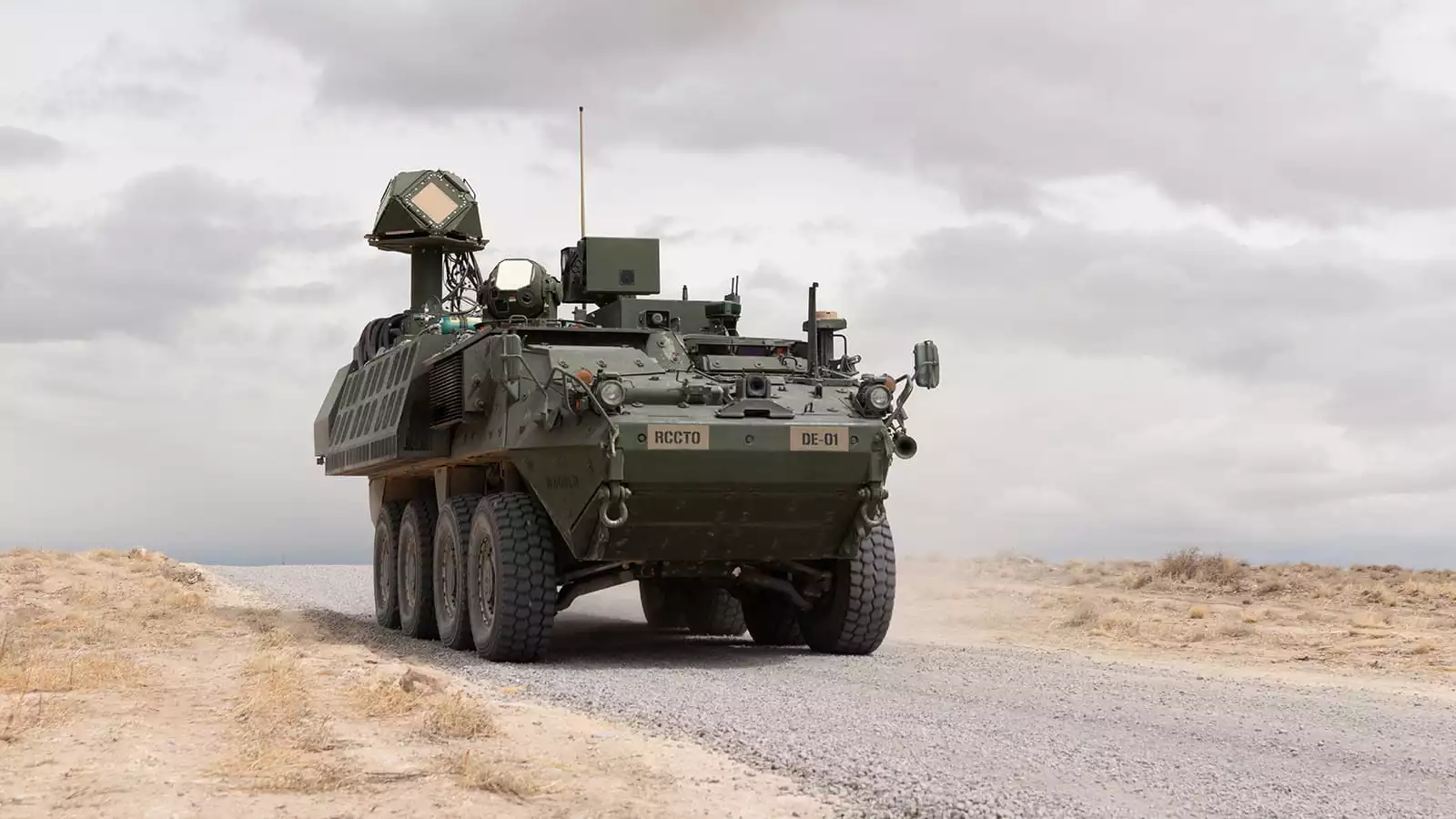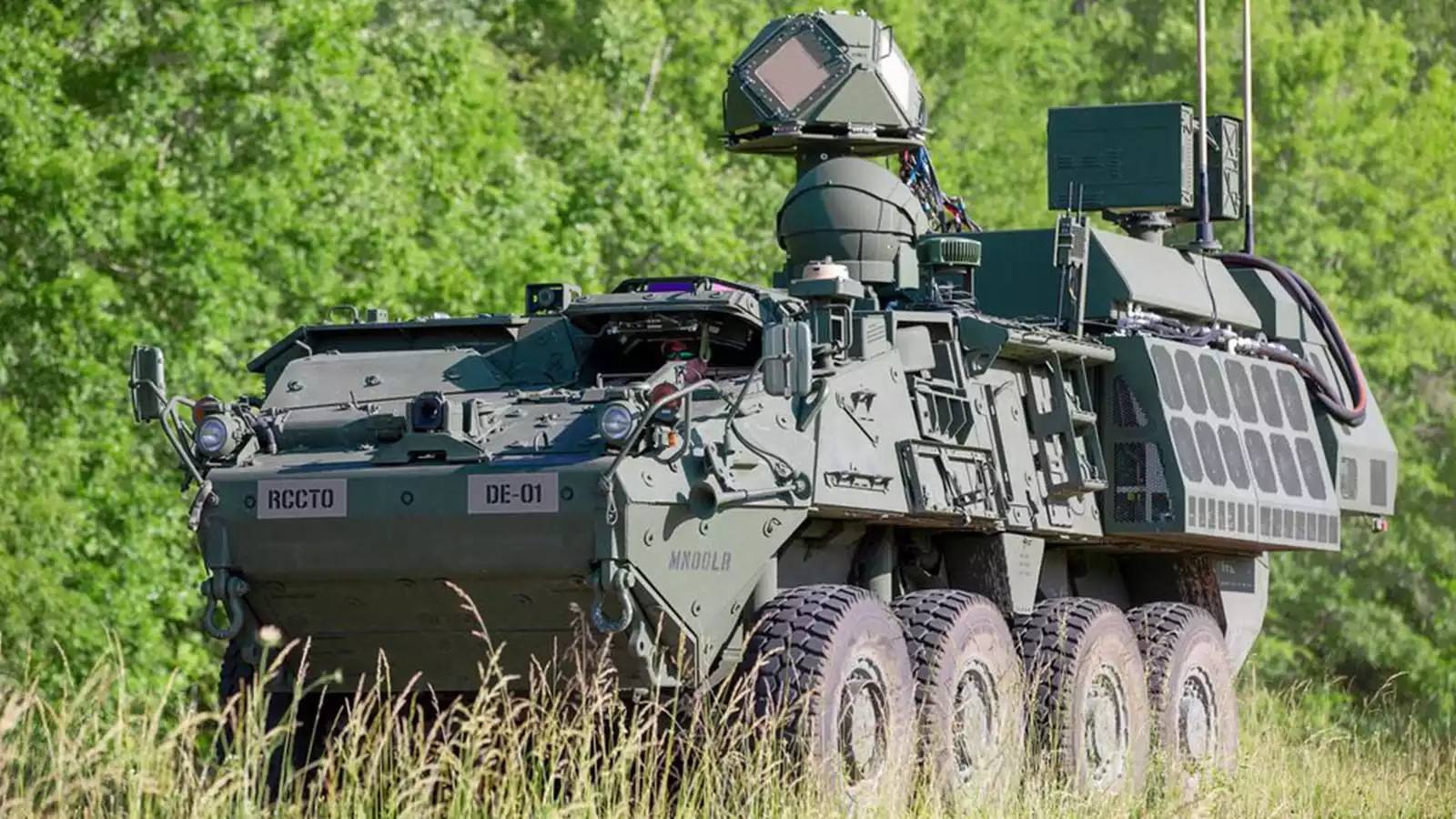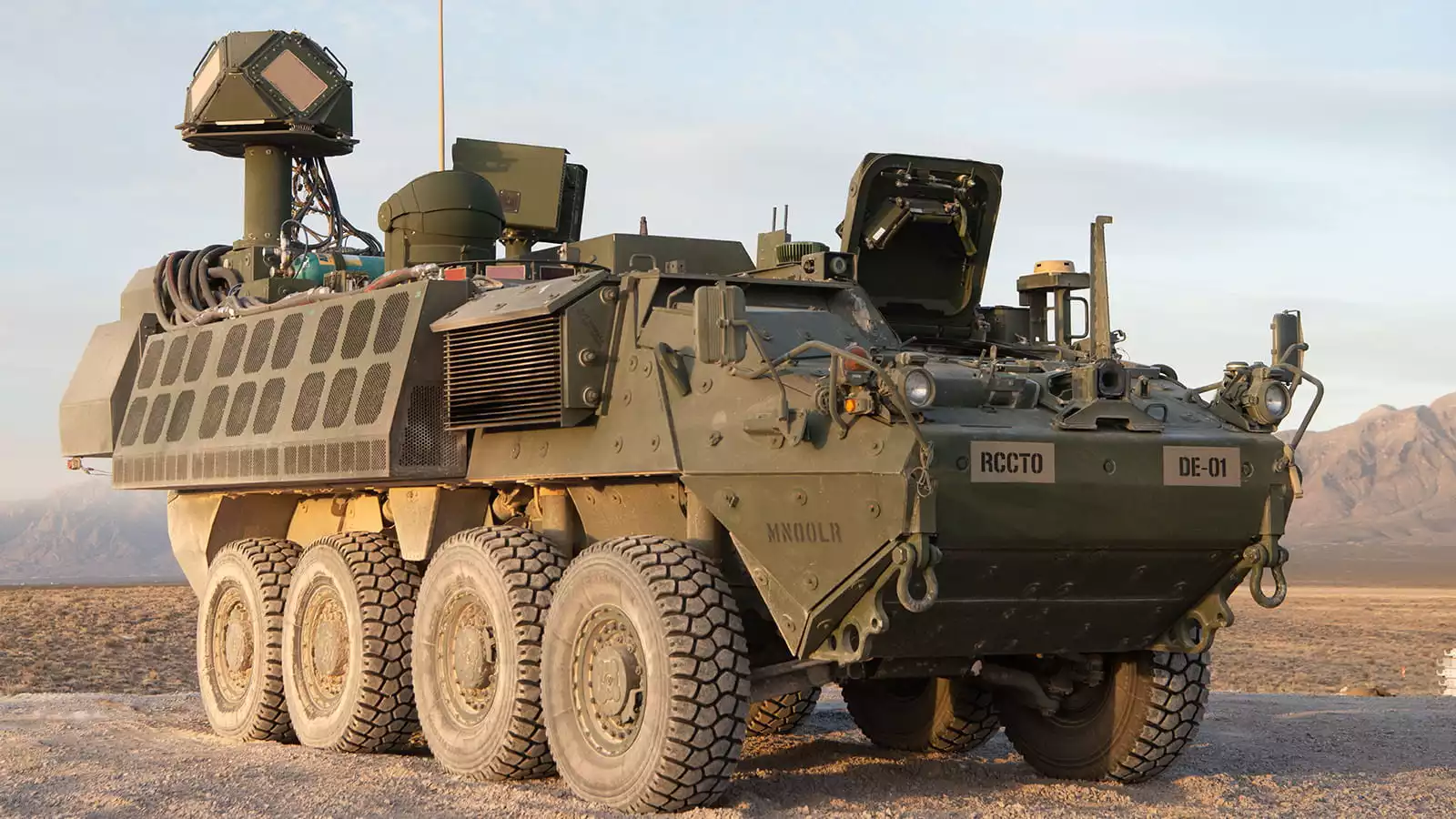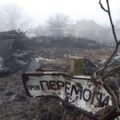The U.S. Army has deployed its cutting-edge laser weapon, the Directed Energy Maneuver-Short Range Air Defense, or DE M-SHORAD, to the Middle East for real-world testing.
The move signifies a crucial step in the U.S. military’s efforts to integrate directed energy weapons (DEWs) onto the battlefield.
Speaking with Breaking Defense, Army Vice Chief of Staff General James Mingus revealed four prototype DE M-SHORAD systems mounted on Stryker infantry vehicles had been deployed to an unspecified region within the U.S. Central Command’s (CENTCOM) theater of operations in early February.
According to Gen. Mingus, the DE M-SHORAD has already begun preliminary field testing, and live-fire tests are expected to start shortly.
Sworn in as the Army’s second-highest ranking officer in early January, Gen. Mingus underscored the experimental nature of the laser weapon’s deployment, emphasizing the goal was learning and adaptation rather than expecting flawless operation.
“It’s a prototype, but we want to experiment in a live environment,” said Gen. Mingus. “Is it 100 percent ready? Is it going to work perfectly? Probably not, but we’re going to learn from it.”


The DE M-SHORAD was developed by Raytheon as part of the company’s portfolio of high-energy laser systems. Using “photons, or particles of light,” it is designed to defeat a range of airborne threats, including drones, rockets, artillery, and mortars.
According to a Raytheon fact sheet, the DE M-SHORAD uses a 50-kilowatt focused laser to “quickly detect, track, identify, and defeat swarming asymmetric threats.” The system is designed to be operated by just one person, offering “360-degree protection all day and all night for high-value military and civilian assets with minimal risk of collateral damage.”
Last year, Raytheon and the U.S. Air Force conducted live-fire testing of a slightly smaller, 15-watt laser weapon designed to fit in the bed of a standard pick-up truck, dubbed the “H4.” In June 2023, Raytheon announced it had delivered four operational “H4” systems to the Air Force.
“Anywhere the Air Force sees a threat from drones, they now have four proven laser weapons that can be deployed to stop asymmetrical threats,” Michael Hofle, senior director of High-Energy Lasers at Raytheon Technologies, said in a press release.
When announcing the transfer of the H4 systems to the Air Force, Raytheon also revealed it had provided a total of eight operational laser systems to the Department of Defense. Several months later, the U.S. Army Rapid Capabilities and Critical Technologies Office (RCCTO) disclosed that the four other laser systems provided by Raytheon were indeed the DE M-SHORAD.
According to DE M-SHORAD program manager, Army Colonel Steven D. Gutierrez, the DE M-SHORAD underwent live-fire testing earlier in early 2023, with the initial batch of prototypes being assigned to the 4th Battalion, 60th Air Defense Artillery Regiment at Fort Sill.
“These high energy laser systems will be a game-changer on the contemporary battlefield, a critical component of an integrated, layered, and in-depth air missile defense for division and brigade maneuver formations,” Col. Gutierrez said in a statement.
With unlimited ammunition capabilities, provided power is available, and high precision, direct energy weapons offer a significant cost-effective alternative to traditional kinetic weapons, potentially revolutionizing the future of warfare.
That said, the recent deployment of the DE M-SHORAD to the Middle East represents the most significant test laser weapons have ever faced and will likely be crucial in determining the future potential of directed energy weapons technology.


After decades of research and development, directed energy weapons, like the DE M-SHORAD, have faced significant technical hurdles, challenging the reality of whether the devices can be a viable or effective option on the battlefield.
The primary problem military-grade laser weapons face stems from a phenomenon known as “thermal blooming.”
When a high-energy laser beam travels through the air, it encounters atmospheric particles like dust, moisture, and gasses. This interaction causes “blooming,” which means the laser’s energy is scattered and absorbed. As a result, the laser beam’s focus becomes diffused, and its strength decreases by the time it reaches the target.
Adverse weather conditions, such as fog, smoke, dust, rain, or snow, significantly increase the likelihood of thermal blooming. This raises doubts about the effectiveness of laser weapons in real-world battlefield conditions.
Turkey is reportedly the only country to successfully use a directed energy weapon to shoot down an unmanned drone.
According to the Belgian news site Army Recognition, on August 4, 2019, Turkey’s vehicle-mounted laser weapon, the “ALKA,” successfully destroyed a Chinese-made Wing Loong II drone used by the Libyan National Army.
However, defense experts have questioned the veracity of these reports, saying there is no evidence that Turkey’s downing of a Wing Loong II was a result of a direct energy weapon.
The Army’s decision to deploy the DE M-SHORAD to the Middle East, an area notorious for its dusty environment and harsh atmospheric conditions, marks an essential phase in the evolution of directed energy weapon (DEW) technology.
Previous testing under controlled conditions has demonstrated the system’s capabilities. However, the unique environmental conditions of the Middle East will be an unprecedented test of the DE M-SHORAD’s operational readiness.
More broadly, this “real world” testing will likely significantly impact the assessment of whether directed-energy technology can ever live up to its expectations as the breakthrough super weapon envisioned by military strategists.
Gen. Mingus highlighted the significance of the DE M-SHORAD’s deployment and the aim of validating the system under the harsh and unpredictable conditions typical of a combat environment.
“Our high-energy lasers are so susceptible to weather,” Gen. Mingus told Breaking Defense. “That’s why I think this is going to be a great laboratory because anytime there’s a dust storm, anytime there’s that kind of thing, it starts to alter the physics of the light particles that actually shoot that beam.”
Nevertheless, deploying the laser weapon to an operational theater reflects a broader shift in military strategy towards leveraging advanced technologies to maintain a competitive edge in global power dynamics.
Ultimately, the DE M-SHORAD’s testing in the Middle East could prove to be a trial of direct energy technology and a pivotal moment in the evolution of military capabilities, promising to redefine the paradigms of air and missile defense for years to come.
Tim McMillan is a retired law enforcement executive, investigative reporter and co-founder of The Debrief. His writing typically focuses on defense, national security, the Intelligence Community and topics related to psychology. You can follow Tim on Twitter: @LtTimMcMillan. Tim can be reached by email: tim@thedebrief.org or through encrypted email: LtTimMcMillan@protonmail.com

